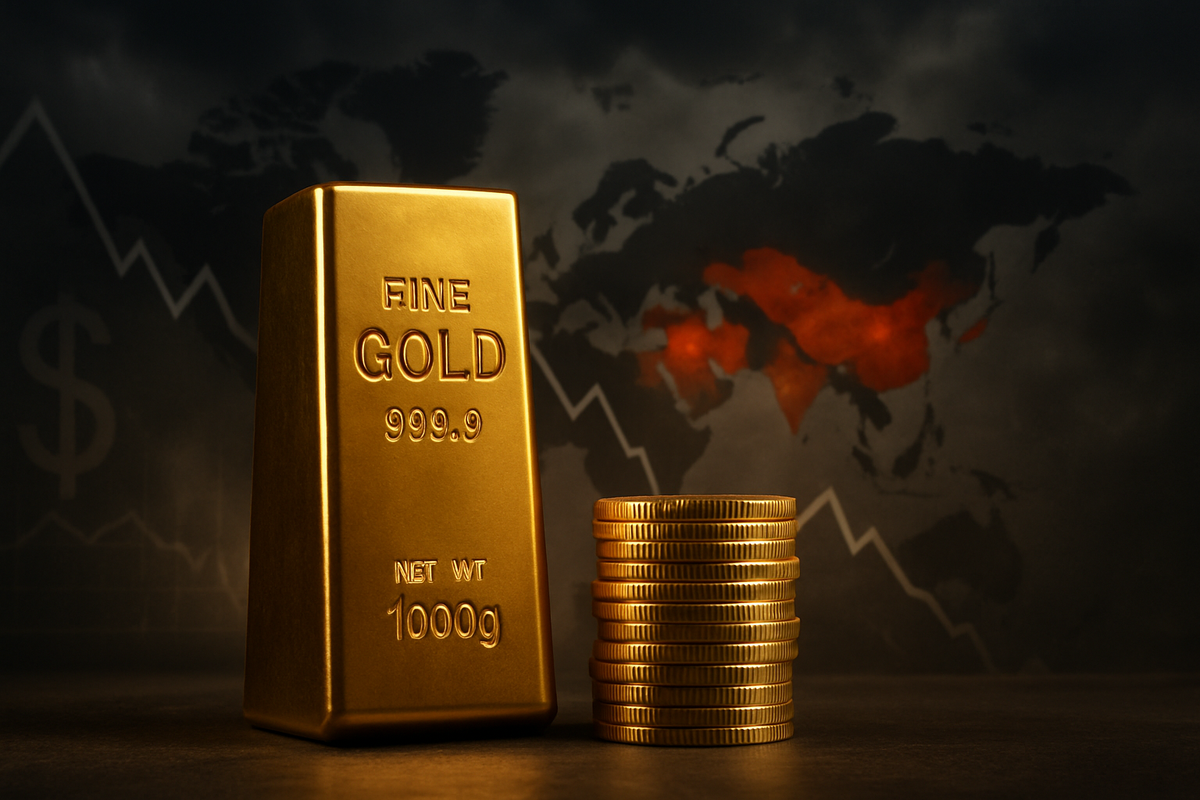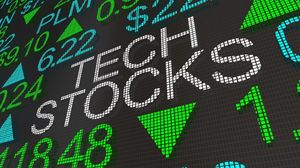
Gold has shattered all previous records in 2025, with its price soaring past the unprecedented $4,000 per ounce mark, registering a staggering 54% surge this year alone. This remarkable ascent is not merely a market anomaly but a clear reflection of profound and widespread global anxieties—a potent cocktail of escalating geopolitical tensions and persistent economic uncertainties that have driven investors to seek refuge in the age-old safe-haven asset. The precious metal, long considered a bastion of stability during turbulent times, is once again proving its mettle as a hedge against a world grappling with instability on multiple fronts.
The immediate implications of this historic rally are significant, signaling a deep-seated lack of confidence in traditional financial instruments and the stability of the global economic and political landscape. As conflicts rage, trade wars intensify, and inflation fears persist, capital is rapidly flowing into gold, pushing its value to unprecedented levels. This flight to safety underscores a collective investor sentiment prioritizing wealth preservation over growth in an environment fraught with unpredictable risks.
A Turbulent Year: Unpacking the Drivers Behind Gold's Historic Ascent
Gold's meteoric rise in 2025 has been meticulously charted against a backdrop of intensifying global volatility. As of early October 2025, the spot price of gold has fluctuated between approximately $4,029.44 and $4,052.44 per ounce, a stark contrast to its valuation at the start of the year. This surge builds upon a substantial 27% gain in 2024, indicating a sustained upward trajectory fueled by a deepening sense of global unease.
The timeline of events leading to this moment is critical. The year began with persistent fears surrounding global inflation, a concern exacerbated by President Donald Trump's new tariffs on imported goods, which have been implemented since the start of 2025. These protectionist measures have strained businesses, elevated consumer costs, and contributed to a weakening job market, all of which fan the flames of inflation. Simultaneously, escalating regional conflicts, including the ongoing war in Ukraine, the protracted Israel-Hamas conflict, and new airstrikes in Iran and Yemen, have severely disrupted maritime trade routes and threatened global energy supply chains. These geopolitical hotspots have not only triggered immediate safe-haven buying but also hinted at potential oil price spikes, further solidifying gold's appeal as an inflation hedge.
Adding to the complexity, political instability has plagued major economies. A prolonged U.S. government shutdown in 2025 created significant economic uncertainty, delaying vital economic data and complicating assessments of the nation's financial health. Similar political uncertainties in France and Japan have also been cited as contributing factors to the general atmosphere of apprehension. On the monetary front, the U.S. Federal Reserve's (US: FED) recent quarter-point interest rate cut and projections for further reductions have made non-yielding assets like gold more attractive by lowering the opportunity cost of holding them. This dovish stance, coupled with a weakening U.S. dollar, has made gold comparatively cheaper for international buyers, thereby boosting demand. Key players and stakeholders involved in this rally include individual investors, institutional funds, and notably, central banks worldwide. Central banks are on track to purchase an estimated 1,000 metric tons of gold in 2025, marking their fourth consecutive year of massive buying, with countries like China actively diversifying their reserves away from U.S. dollar-denominated assets. This institutional buying spree, alongside record inflows into gold-backed Exchange Traded Funds (ETFs) (such as SPDR Gold Shares (NYSE: GLD) and iShares Gold Trust (NYSE: IAU)), which have seen $64 billion globally and $35 billion in the U.S. by September 2025, underscores the broad-based conviction in gold's enduring value. The initial market reaction has been a clear flight from riskier assets, with equities experiencing heightened volatility and bond yields fluctuating as investors reallocate portfolios towards perceived safety.
Winners and Losers: Corporate Fortunes Amidst Gold's Ascent
The unprecedented surge in gold prices creates a distinct bifurcation in the financial markets, yielding clear winners and potential losers among public companies. Gold mining companies, in particular, stand to be the primary beneficiaries, as their core product appreciates significantly in value.
Winners: Gold mining giants like Barrick Gold (NYSE: GOLD), Newmont Corporation (NYSE: NEM), and Agnico Eagle Mines (NYSE: AEM) are experiencing a windfall. Higher gold prices directly translate into increased revenues and potentially expanded profit margins, assuming their operational costs remain stable or are managed effectively. These companies may see enhanced cash flows, enabling them to invest in exploration, expand existing operations, or return capital to shareholders through dividends and buybacks. Junior mining companies and exploration firms also benefit, as higher gold prices make previously uneconomical deposits viable, attracting new investment and potentially leading to mergers and acquisitions. Furthermore, companies specializing in precious metal streaming and royalties, such as Franco-Nevada (NYSE: FNV) and Wheaton Precious Metals (NYSE: WPM), will see their revenue streams swell as the value of the gold they are entitled to increases. Providers of gold-backed Exchange Traded Funds (ETFs), like State Street Global Advisors (NYSE: STT), which manages the SPDR Gold Shares (NYSE: GLD), and BlackRock (NYSE: BLK), which manages the iShares Gold Trust (NYSE: IAU), are also experiencing significant inflows, boosting their assets under management and associated fees.
Losers: Conversely, companies highly sensitive to commodity price fluctuations or those operating in sectors that thrive on economic stability might face headwinds. Businesses that rely heavily on discretionary consumer spending could see reduced demand if economic anxieties translate into tighter household budgets. Furthermore, industries that use gold as a component in their manufacturing processes, such as electronics companies like Apple (NASDAQ: AAPL) or luxury goods manufacturers, might experience increased input costs, potentially squeezing their profit margins unless they can pass these costs onto consumers. Financial institutions heavily invested in riskier assets or those with significant exposure to emerging markets might also face challenges if the global economic downturn deepens, leading to increased defaults or market volatility that outweighs any potential benefits from a flight to quality. While not direct "losers" from gold's rise itself, companies that are perceived as growth stocks or those highly leveraged to economic expansion might see their valuations pressured as investors shift capital towards safer havens.
Wider Significance: A Global Reordering of Confidence
Gold's monumental surge in 2025 is more than just a market event; it is a profound indicator of a shifting global paradigm, reflecting a significant reordering of confidence in traditional financial and political structures. This event fits squarely into a broader industry trend of de-dollarization and diversification among central banks and institutional investors, a trend that has been quietly gaining momentum for several years but has accelerated dramatically amidst recent instabilities.
The ripple effects on competitors and partners are multifaceted. For fiat currencies, particularly the U.S. dollar, gold's ascent signals a diminishing allure as the world's primary reserve asset. While the dollar remains dominant, the aggressive central bank gold buying, especially from nations like China, suggests a concerted effort to reduce reliance on the greenback and diversify national reserves. This could lead to a more multipolar global financial system, with potential implications for international trade and capital flows. Emerging market economies, often vulnerable to currency fluctuations and external shocks, might find gold a more attractive reserve asset, potentially influencing their monetary policies and trade relationships.
Regulatory and policy implications are also noteworthy. Governments and central banks may face increased pressure to address the underlying causes of investor anxiety, whether through more robust geopolitical diplomacy, clearer economic policies, or measures to combat inflation. The sustained demand for gold could also prompt discussions around the transparency and regulation of the precious metals market, especially concerning derivatives and physically-backed products. Historically, gold has always served as a barometer of global stability. Comparisons to similar events, such as the 1970s oil crises, the dot-com bubble burst, or the 2008 financial crisis, reveal a consistent pattern: during times of extreme uncertainty and inflation, gold's appeal as a safe haven intensifies. However, the current confluence of geopolitical conflicts, trade wars, and persistent inflation, coupled with aggressive central bank buying, presents a unique and perhaps more profound challenge to the global order, making this rally particularly significant. This isn't merely a cyclical upturn; it reflects a deep-seated structural shift in how global wealth is being preserved and valued.
What Comes Next: Navigating the Golden Horizon
The path forward for gold and the broader financial markets is fraught with both opportunities and challenges, contingent on the evolution of the very anxieties that have propelled its current rally. In the short term, gold prices are likely to remain elevated, supported by ongoing geopolitical tensions and persistent inflation fears. Any further escalation in global conflicts, new trade disputes, or unexpected economic downturns could provide additional impetus for gold's continued appreciation. Investors should brace for continued volatility across other asset classes as capital continues its flight to safety.
In the long term, the trajectory of gold will heavily depend on whether the underlying global anxieties begin to subside. A significant de-escalation of conflicts, a resolution to trade disputes, or a clear and sustained decline in inflation could temper gold's appeal. However, given the entrenched nature of many current geopolitical and economic issues, a swift return to pre-2025 stability seems unlikely. Potential strategic pivots for investors include diversifying portfolios beyond traditional equities and bonds, with a greater allocation to tangible assets like gold. Companies, particularly those in the mining sector, may seize opportunities to expand production, acquire new assets, or consolidate operations to capitalize on the sustained high prices. Conversely, businesses sensitive to commodity price increases may need to adapt their supply chains or pricing strategies to mitigate rising input costs.
Market opportunities may emerge in related sectors, such as gold exploration and technology companies that can improve extraction efficiency. Challenges include the risk of a sudden reversal in investor sentiment if global conditions improve unexpectedly, leading to a sharp correction in gold prices. A less likely but plausible scenario involves a "black swan" event that drastically alters the global economic or political landscape, which could either further fuel gold's rise or trigger an unforeseen shift in investor behavior. Ultimately, the future of gold is inextricably linked to the future of global stability.
A Golden Epoch: Summarizing the Market's New Reality
Gold's unprecedented 54% surge in 2025, pushing its price beyond $4,000 an ounce, marks a pivotal moment in financial history. This remarkable rally is not a fleeting trend but a profound testament to the deep-seated global anxieties—geopolitical conflicts, economic uncertainties, and persistent inflation—that have driven investors and central banks alike to seek the ultimate safe haven. The key takeaway is clear: in a world increasingly characterized by instability, gold remains an indispensable asset for wealth preservation and diversification.
Moving forward, the market will likely remain highly sensitive to geopolitical developments and macroeconomic indicators. The sustained buying by central banks, coupled with significant inflows into gold-backed ETFs, signals a structural shift in global asset allocation, reflecting a broader erosion of confidence in traditional fiat currencies and a desire for tangible security. This new reality suggests that gold's role as a primary hedge against uncertainty is more pronounced than ever.
Investors should closely monitor several key factors in the coming months. These include the trajectory of ongoing geopolitical conflicts, particularly in Eastern Europe and the Middle East; the U.S. Federal Reserve's monetary policy decisions and the strength of the U.S. dollar; global inflation rates; and, crucially, the continued gold purchasing patterns of central banks. Any significant shifts in these areas will dictate gold's future movements. While the current environment strongly favors gold, investors must remain vigilant, understanding that while gold offers stability, its price can still be subject to market dynamics and shifts in global sentiment. This golden epoch underscores a fundamental reassessment of risk and value in a turbulent world.
This content is intended for informational purposes only and is not financial advice





